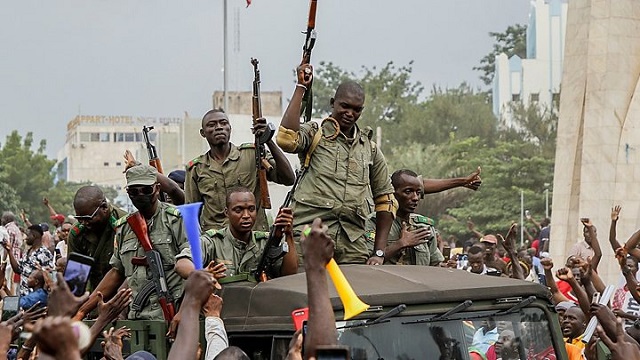
Behind the coup in Mali

The things that democracy (and pseudo democracy) evangelists need to know about freedom and liberty
THE LAST WORD | ANDREW M. MWENDA | So another military coup has taken place in Mali removing an unpopular yet democratically elected government of President Ibrahim Keita. Keita came to power as an opposition firebrand in 2013, after a military coup had overthrown President Amadou Toure. His promises turned out to be pipedreams. The people, tired of corruption and incompetence, have been demonstrating for months, leading to an army mutiny and coup. The Mali coup is popular with “the people” (meaning those angry urban youths and intellectuals we see screaming on the streets). However, the UN, AU and ECOWAS have rejected it and have imposed sanctions on the country.
Given the naivety of many democracy (and pseudo democracy) evangelists in Africa, it is important to give a brief historical background of this nation’s troubled democratic experiment. Toure was the military man who led the coup against long serving “dictator” President Muassa Traore (1968-1991). After the coup, he did not stay in power long. He freed political parties and organised a national conference. It wrote a constitution with “democratic safeguards” like the proverbial term limits, which in Africa are assumed to guarantee peaceful transition of power.
One year after assuming office, Toure organised elections in which he did not participate. Alpha Konare was elected president. A nice and jovial man (I met him in 1997 on my first and last visit to that troubled country), Konare respected term limits. In 2002, as he was retiring, the respected Toure ran for the presidency and won. The world began to consider Mali a “successful democracy.” Articles were written, books published, lectures given and television interviews aired about “democratic consolidation” in Mali.
Fast forward, in 2012 a Tuareg rebellion erupted in Northern Mali, precipitating heightened opposition to Toure’s rule, which was coming to an end. The rebels captured the northern region and declared independence. A military upstart, Amadou Sanogo, staged a coup, which was welcomed by opposition groups led by Keita. It took the intervention of French troops to end the rebellion.
The collapse of Mali’s democratic experiment was itself a result of foreign efforts to enforce democracy in Libya where the overthrow of Muammar Gaddafi left gun stores open. Toureg rebels got access to these weapons and used them to launch their rebellion. An effort to promote democracy in one country led to state collapse in two. Nonetheless, and fortunately for Mali, the soldiers organised elections in 2013 that brought Keita to power. He was reelected in a hotly contested second round in 2018.
The lessons from this Mali story are simple but fundamental. In his 1968 masterpiece, Political Order in Changing Societies, American political science professor, Samuel Huntington, argued that the most important political distinction among countries is not their form of government but their degree of government. The form of government is not the only important thing about a country, not even the most important – passionate though we may be about this. For instance, the distinction between order and anarchy is much more fundamental than one between democracy and dictatorship. Even before talking about democratic consolidation in Mali, we need to talk about state consolidation.
The post Behind the coup in Mali appeared first on The Independent Uganda:.
0 Response to "Behind the coup in Mali"
Post a Comment